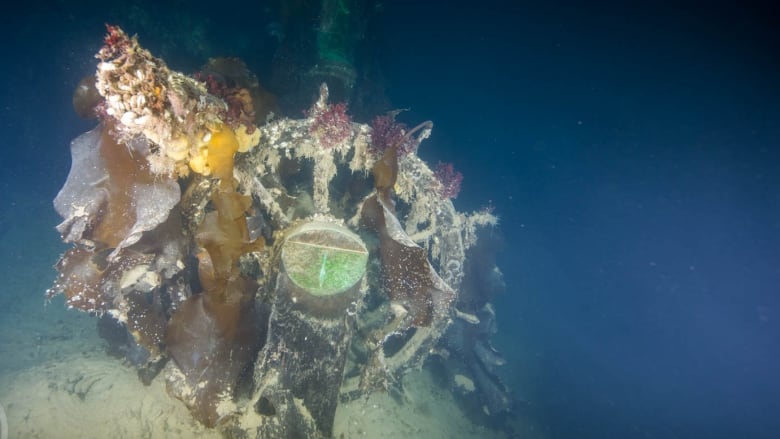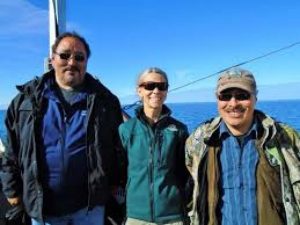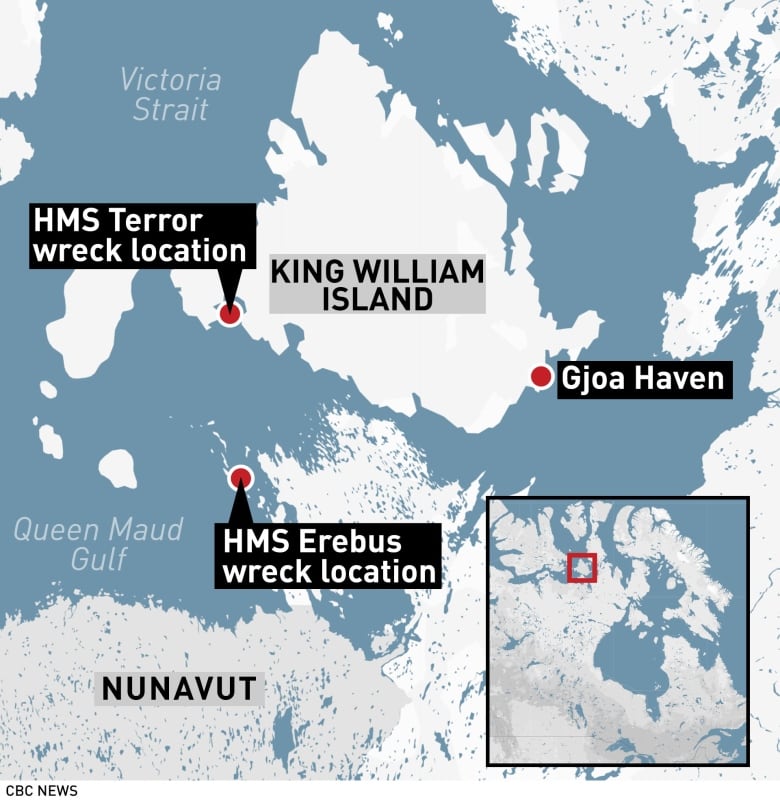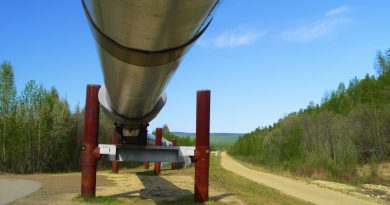Tragedies in hamlet in Arctic Canada sparking talk of a Franklin ‘curse’

Some residents of an Arctic hamlet located near the Franklin shipwrecks have linked a spate of tragic deaths in the community to divers poking around the sea floor resting places of long-dead crew members.
“They feel the wrecks are cursed and should not be disturbed,” Parks Canada official Tamara Tarasoff said of the reactions of some Inuit living in Gjoa Haven, a Nunavut community about 1,000 kilometres northeast of Yellowknife.
Local resident Jacob Keanik also confirmed that members of the community, still reeling from the unexpected deaths of six residents, were pointing the finger at the ships that took part in Sir John Franklin’s ill-fated 1845 expedition to locate the Northwest Passage.
“People are superstitious. They feel there is a connection between the deaths and disturbing the wreck sites,” he said.
Both comments were made Aug. 24, during a teleconference between eight members of the Franklin Interim Advisory Committee (which includes Parks Canada staff), representatives of the Nunavut government and Inuit heritage organizations.
The committee makes recommendations on the investigation of the wrecks and potential related tourism. At the time the teleconference took place, the committee was doing preparatory work for Environment Minister Catherine McKenna’s pending visit to Gjoa Haven.

The committee decided to warn the minister about the so-called curse in case a resident asked her about it.
CBC News obtained minutes of the meeting through the Access to Information Act, and confirmed the observations directly with Keanik.
“People like to talk, you know,” he said in an interview. “People thought after … finding these shipwrecks … they seemed to notice we’re losing so many people and they thought it was from that.”
Keanik is president of the Nattilik Heritage Centre in Gjoa Haven, which is to expand by 2023 to showcase artifacts retrieved from the Franklin wrecks. He lost a brother and nephew to a boating accident in the recent string of deaths, all of which took place over two weeks in August. Two other men died in an all-terrain vehicle rollover, a community elder passed away and a staff member at a local school succumbed to a heart attack.
All crew perished
HMS Erebus and HMS Terror left England in 1845 under Franklin’s command, seeking a Northwest Passage to the Pacific through the ice-choked Arctic. Every crew member perished, although the precise details of their fate eluded searchers for more than a century.
Canadian search teams eventually found the sea floor wreck of Erebus in 2014. Searchers found what was left of the Terror in 2016, on the bottom of Terror Bay at King William Island, west of Gjoa Haven.
The Franklin committee decided to respond to the community’s concerns by telling residents that no human remains had been found on the two wrecks.

“It is only artifacts that are being found and being taken off wreck sites and … there are plans in place that if any bodies are found, they will be left in place,” Fred Pedersen, of the Kitikmeot Inuit Association, is quoted as telling the group. “[We] will not bring up or disturb human remains.”
The late Louie Kamookak, an Inuit oral historian and Gjoa Haven resident who helped find the Erebus, blessed the shipwreck site in 2015 with sand taken from the community and sprinkled on the sea.
Keanik, who also participated, said the brief ceremony carried out from a boat was meant “to have things better in the future.” (Kamookak died of cancer at age 58 in March this year.)
But the Terror shipwreck site did not receive a similar traditional blessing until two years after its discovery, following the deaths of the six Gjoa Haven residents.
The Franklin committee was told that the Guardians — Inuit caretakers appointed to monitor the Franklin shipwreck sites — felt that a blessing of the Terror shipwreck was needed.
“We have spoken to the Guardians and they feel the Terror wreck needs to be blessed, as so far only the Erebus has been blessed,” say the Aug. 24 minutes.
Parks Canada spokesperson Dominique Tessier said this second blessing has since been carried out.
“This summer, following the tragedies, elders blessed sand from Gjoa Haven and the Terror Guardians brought it to the wreck of HMS Terror, where they sprinkled it over the wreck and performed a blessing,” she told CBC News.
“Both of these blessings were led by Inuit from Gjoa Haven.”
Dismisses ‘curse’ theory
Keanik dismisses talk of a Franklin “curse,” saying the community has been touched by tragedy in the past. “It was always like that, even before these shipwrecks were found.”
But he said he does accept his mother’s warnings about invisible, non-human beings inhabiting King William Island, the Arctic island that harbours Gjoa Haven at its east end.
“My late mom told me even before these shipwrecks were discovered, she mentioned you have to watch out,” he said. “The whole King William Island has non-human people that we cannot see.”
He said his mother used to warn him: “Don’t let them get to you – just do what you have to do.”
Keanik said that when he travels with a friend across the tundra, he senses the presence of these beings.

“It’s a funny feeling when once we get on the other side of the island … You sense that somebody’s around you, but there’s nobody around you,” he said.
“That’s a funny feeling we always have every time we get on the other side.”
Keanik said his mother never made it clear whether she thought the invisible beings are the spirits of the lost Franklin crew, or whether they haunted the dying crew members in the mid-19th century.
“I couldn’t answer that,” he said.
The tragic and mysterious Franklin story has inspired songs, paintings, books and even a recent AMC television series that imagined a menacing supernatural force tormenting the crew members.
Related links from around the North:
Canada: Franklin expedition: How a doomed Arctic voyage presaged transpolar flights, Cryopolitics Blog
Norway: Roald Amundsen’s Maud back home 100 years after setting sail from Norway, CBC News
Russia: First icebreaker to reach the North Pole ends her days in a scrapyard, The Independent Barents Observer



